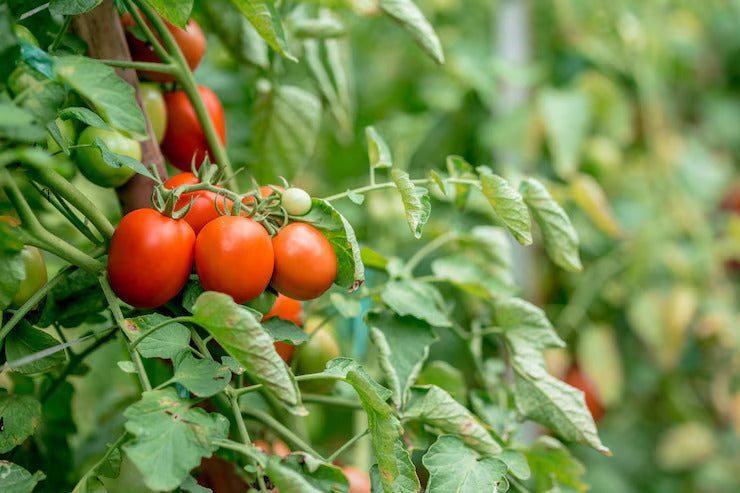
Grow Tomato in Pakistan – Moji Mall Guide
Share
Growing tomatoes (ٹماٹر) at home is one of the most rewarding gardening experiences. With the right season and basic care, you can enjoy fresh, juicy tomatoes for salads, curries, and sauces straight from your garden. Here’s a simple step-by-step guide to growing tamatar successfully at home in Pakistan.
| Aspect | Details |
|---|---|
| Best Sowing Time | October to February |
| Ideal Temperature | 15°C to 30°C |
| Germination Time | 5–10 days |
| Transplant Time | 4–5 weeks after sowing |
| Spacing | 18–24 inches between plants |
| Harvest Time | 70–90 days after sowing |
Step 1: Sow Seeds 🌱
When to Sow:
- Sow seeds from October to February, when temperatures are mild.
- Ideal soil temperature for germination is 15°C to 30°C.
- Avoid sowing during extremely hot or rainy months.
How to Sow: Start seeds in trays or small pots. Sow seeds 3/4 inch deep in light, fertile seed-starting mix and cover lightly.
Germination Tips: Seeds sprout in 5–10 days. Keep the soil moist and place trays in bright but indirect sunlight during germination.
Step 2: Transplant Seedlings 🌿
When to Transplant: Transplant when seedlings have 4–6 true leaves and are 5–6 inches tall, usually 4–5 weeks after sowing.
How to Transplant: Move into 12–14 inch pots or garden beds, spacing plants 18–24 inches apart. Plant deeply, burying 2/3 of the stem to encourage strong roots.
Aftercare: Water immediately after transplanting. Provide a support stake or small cage early to guide growth.
Step 3: Care for Plants 🌞💧
Sunlight Needs: Tomatoes need 6–8 hours of direct sunlight daily for good flowering and fruiting.
Watering: Water deeply 2–3 times a week, depending on weather. Water at the base to avoid wetting leaves and reducing disease risk.
Feeding Schedule: Start feeding after 3 weeks with NPK 20-20-20 fertilizer every 15 days. Switch to NPK 5-15-45 once plants begin flowering.
Step 4: Protect Plants 🐛
Common Pests: Watch for aphids, whiteflies, hornworms, and fungal diseases like blight.
Natural Protection: Spray neem oil every 10–12 days (1 teaspoon neem oil + 1 liter water), focusing under leaves.
Common Problems:
- Yellow Leaves: Often due to overwatering or fungal disease — adjust watering and prune lower leaves.
- Fruit Cracking: Caused by uneven watering — keep moisture steady.
- Blossom End Rot: Black sunken spots at fruit base — avoid calcium deficiency and irregular watering.
Step 5: Harvest Tomatoes 🍅
When to Harvest: Tomatoes are ready 70–90 days after sowing, when fruits turn fully colored (red, orange, yellow depending on variety) and feel slightly soft.
How to Harvest: Gently twist and pull fruits from the stem or cut with scissors to avoid damaging the plant.
Bonus Tip: Regular harvesting encourages the plant to produce more fruits over a longer season.
FAQs
1. Can I grow tomatoes in pots?
Yes, use 12–14-inch-deep pots and provide a stake or cage for support as plants grow.
2. Why are my tomatoes not ripening?
Lack of sunlight, excessive nitrogen, or very cold weather can slow ripening. Ensure at least 6 hours of sunlight daily.
3. Should I prune tomato plants?
Yes, pruning side shoots improves airflow, reduces diseases, and focuses plant energy on fruit production.
4. How often should I water tomato plants?
Water deeply 2–3 times a week, adjusting based on rainfall and soil moisture.
Growing tomatoes at home is simple once you provide sun, steady moisture, and support. With a little patience and care, you'll enjoy fresh, juicy tamatar — sweeter and healthier than any store-bought ones.

